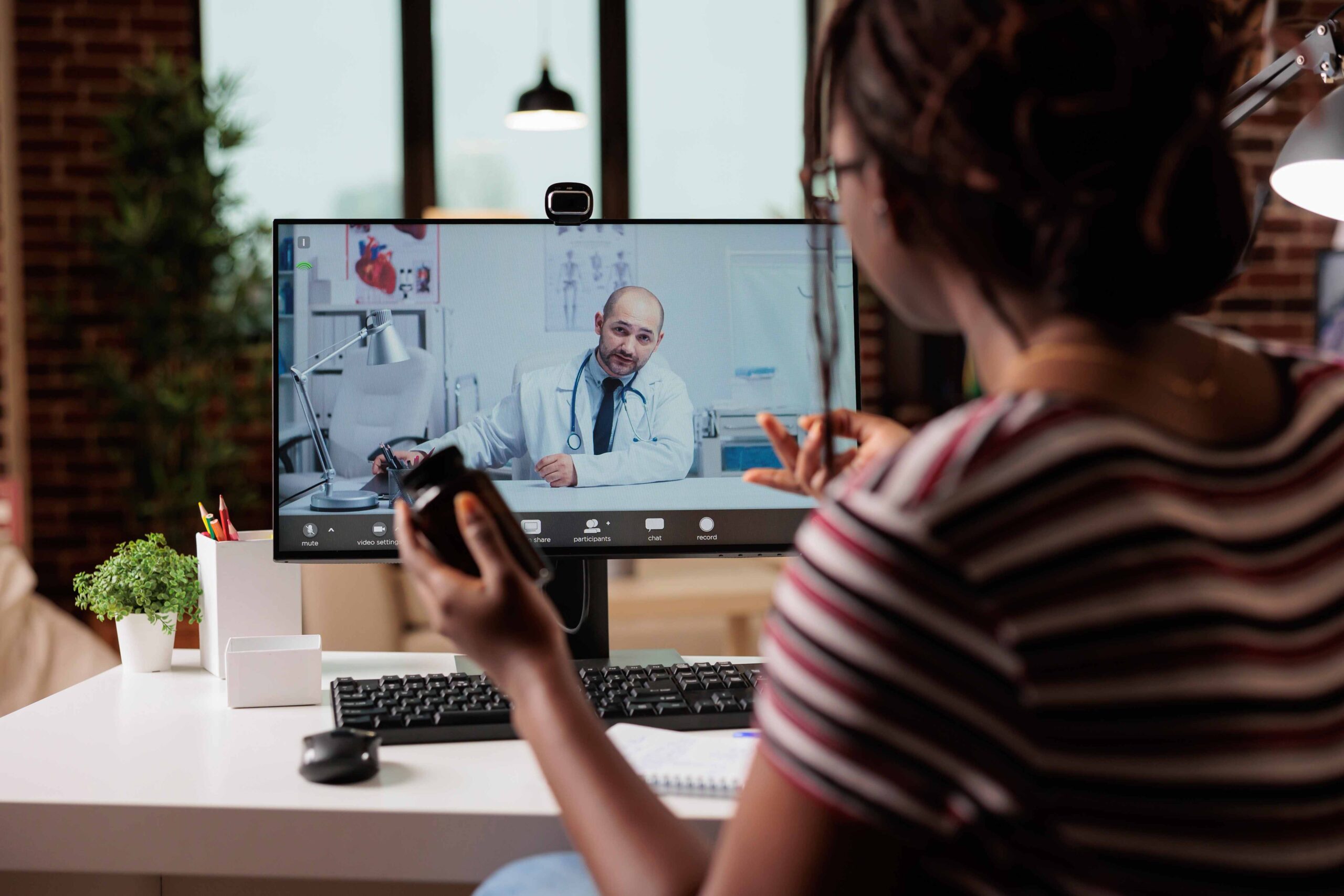Understanding Telepsychiatry
Telepsychiatry is shaking up mental health care, making it easier and more convenient to get the help you need. Let’s break down what telepsychiatry is, its perks, and a few bumps in the road you might encounter.
What is Telepsychiatry?
Telepsychiatry, sometimes called telemental health or E-mental health, uses tech like video calls to connect you with mental health pros, no matter where you are. This isn’t a new concept—it’s been around since the 1960s—but it’s really taken off in the last 20 years. Now, even if you’re in a remote area, you can get expert help or your primary care doc can consult with specialists (NCBI).
Using video chats, telepsychiatry covers a lot of ground: evaluations, therapy, education, and managing meds. The big win here is cutting down on barriers like needing a ride, juggling childcare, or taking time off work to see a doctor (American Psychiatric Association).
Why Telepsychiatry Rocks
Telepsychiatry has some serious upsides. First off, you can get help without leaving your couch. This is a game-changer for folks with mobility issues or those living far from the nearest clinic. It also opens doors for people in underserved areas who might struggle to get traditional in-person care.
The Good Stuff
- Comfort and Privacy: Talk about your feelings from your own space, where you feel safe.
- Save Money: No travel costs mean more cash in your pocket.
- Accessibility: Great for those in remote or underserved areas.
The Not-So-Good Stuff
But, it’s not all sunshine and rainbows. Telepsychiatry has its quirks:
- Tech Troubles: Internet issues can mess with your session.
- Not for Everyone: Some conditions need face-to-face time that a screen just can’t replace.
Making the Choice
Knowing what telepsychiatry is and weighing the pros and cons can help you decide if it’s right for you. It can make mental health care more accessible and improve outcomes, but it’s crucial to think about your unique needs and situation when choosing between telepsychiatry and in-person visits.
Telepsychiatry: Making Mental Health Care Accessible
Telepsychiatry is on the rise, and it’s shaking up how we think about mental health care. But before we dive in, let’s break down what makes it tick and what we need to watch out for.
What Do the Docs Think?
Many mental health pros are all in on telepsychiatry. Why? It’s a game-changer for folks who can’t easily get to a clinic. Think about people in the sticks or those who can’t leave home (NCBI). Plus, it lets therapists reach more patients without the hassle of travel.
But it’s not all sunshine and rainbows. Some therapists worry about “doctor shopping,” where patients hop from one doc to another, messing up their care (NCBI). And then there’s the biggie: what do you do if a patient is in crisis, like feeling suicidal, and you’re miles away? That’s why having solid plans and rules is a must.
Legal and Ethical Stuff
Jumping into telepsychiatry isn’t just about flipping on a webcam. There are some serious legal and ethical hoops to jump through.
First off, therapists need to know their roles, especially when things go south. If a patient is in a bad spot, there should be a clear path to get them the help they need, pronto. And let’s not forget about keeping things private. All that patient info needs to be locked down tight.
Ethics are a big deal too. Patients need to know exactly what they’re signing up for. That means clear info on how telepsychiatry works, its limits, and how their privacy is protected. When therapists stick to these standards, it builds trust and makes the whole process smoother.
Wrapping It Up
Telepsychiatry has the potential to make mental health care more accessible and convenient. By listening to what practitioners have to say and tackling the legal and ethical hurdles head-on, we can make sure that telepsychiatry is not just effective but also safe and trustworthy. This way, anyone seeking mental health support can get the help they need, without compromising on quality or privacy.
Telepsychiatry: A Game Changer for Mental Health Care
Telepsychiatry is shaking up how we get mental health help, making it easier and more effective for everyone. Let’s break down what telepsychiatry offers and why folks are loving it.
What Can Telepsychiatry Do for You?
Telepsychiatry isn’t just a fancy word; it’s a way to get mental health care without leaving your couch. Here’s what you can get:
- Psychiatric check-ups and follow-ups: No need to sit in a waiting room.
- Therapy sessions: Talk it out with a pro from your living room.
- Trauma-focused help: Specialized care for those tough times.
- Brain assessments: Get your noggin checked without the hassle.
- Crisis help: Immediate support when you need it most.
- Specialized services: Whether you’re a senior, a kid, or even in prison, there’s help for you.
With telepsychiatry, you can get all this without the travel. Just log in and you’re good to go.
Does It Really Work?
You bet it does. Studies show telepsychiatry is just as good as seeing a doctor in person. Whether you’re an adult, a kid, or a senior, the diagnosis and care are spot on.
People are pretty happy with it too. Most folks find video calls just as satisfying as face-to-face visits. You can even email your doctor and get the same level of care. Some doctors aren’t as thrilled with video calls, but hey, you can’t please everyone.
The big win here is convenience. You don’t have to leave home, which is a huge plus if you have mobility issues or live far from a clinic. It’s also a lifesaver for people in underserved areas who might not have easy access to mental health care.
Why People Love Telepsychiatry
Telepsychiatry makes getting mental health care a breeze. No more long drives or waiting rooms. Just log in and get the help you need. It’s especially great for:
- People with mobility issues: No need to leave the house.
- Folks in remote areas: Get care no matter where you live.
- Busy people: Fit a session into your lunch break.
By bringing mental health care to you, telepsychiatry knocks down barriers like distance and transportation. It’s a win-win for everyone.
So, if you’re looking for a way to get mental health care that’s easy, effective, and convenient, telepsychiatry might just be your new best friend.
Telepsychiatry: What the Research Says
Telepsychiatry is getting a lot of buzz as a solid option for mental health care. Let’s break down what the research says about how well it works and if it saves you money.
How Well Does It Work?
Loads of studies show that telepsychiatry works just as well as seeing a doctor in person. Video calls for mental health check-ups are just as accurate, and the results are pretty much the same whether you’re on a screen or in a room with your doctor (NCBI).
Doctors can diagnose mental health issues just as well over video as they can face-to-face. This holds true for everyone—kids, teens, adults, and even older folks (NCBI).
Patients are just as happy with video sessions as they are with in-person visits. Privacy and confidentiality are on par with traditional care, and people of all ages report good experiences (American Psychiatric Association).
Is It Cheaper?
Telepsychiatry can save you some cash. You don’t have to worry about travel costs, taking time off work, or other expenses that come with going to a doctor’s office. But how much you save can depend on the tech you use and how often you use it (NCBI).
While we need more research to get the full picture on costs, early signs show telepsychiatry could be a budget-friendly way to get mental health care.
Telepsychiatry is especially handy for people in remote areas who might not have easy access to a psychiatrist. Using tech to connect with doctors can make getting help more convenient and flexible, saving time and money for both patients and providers.
Making the Choice
When deciding between telepsychiatry and in-person care, think about what works best for you. Both have their perks and downsides. Talk to a mental health professional to figure out the best option for your needs.
In the end, whether you go for telepsychiatry or stick with traditional visits, the most important thing is that you get the help you need.
Telepsychiatry in Practice
Telepsychiatry is changing the game for mental health care, making it easier for folks to get the help they need, no matter where they are. Let’s break down where telepsychiatry is used and how state rules and payment policies shape this modern approach to mental health.
Where Telepsychiatry Shines
Telepsychiatry isn’t just a one-trick pony; it fits into all sorts of places:
- At Home: Imagine chatting with your psychiatrist from your couch. Perfect for those with mobility issues or living in the boonies where in-person visits are a hassle.
- Outpatient Clinics: No more waiting rooms. Patients can connect with their doctors remotely, saving time and stress.
- Hospitals: Emergency rooms can now offer quick psychiatric care, helping folks in crisis get the help they need, fast.
- Schools: Students can get mental health support without leaving school grounds, boosting their well-being and grades.
- Correctional Facilities: Inmates can receive ongoing psychiatric care and emergency services, making sure their mental health is looked after.
- Nursing Homes: Residents get regular mental health check-ups, ensuring their needs are met without leaving the facility.
- Military Treatment Facilities: Active-duty military and veterans can access mental health services easily, no matter where they’re stationed.
State Rules and Payment Policies
Telepsychiatry’s success depends a lot on state rules and how it’s paid for. Right now, 43 states and D.C. have laws about private insurance paying for telehealth. Many states even make sure telehealth gets paid the same as in-person visits, making it a good financial choice for patients. Medicare has also jumped on board, allowing places like Federally Qualified Health Centers and Rural Health Clinics to offer telepsychiatry (American Psychiatric Association).
If you’re thinking about telepsychiatry, it’s smart to check out your state’s specific rules and payment policies. This way, you know what to expect and can plan for any costs.
Telepsychiatry is making mental health care more accessible and convenient. By fitting into various settings and adapting to state rules and payment policies, it brings care right to your doorstep. This means quicker evaluations, timely treatments, and better support, improving mental health for everyone involved.
Choosing Between Telepsychiatry and In-Person Care
Deciding between traditional in-person care and the convenience of telepsychiatry can be a tough call. Both have their perks and things to think about. Here’s a breakdown to help you figure out what works best for you:
Things to Think About
- Ease of Access: Telepsychiatry lets you get mental health care without leaving your house. This is a big win for folks with mobility issues or those living far from clinics. It opens up mental health services to people who might struggle to get to in-person appointments, especially in areas where services are scarce. No travel means more time saved and easier scheduling.
- Accuracy and Effectiveness: Studies show telepsychiatry is just as good as in-person care for diagnosing and treating mental health issues. It’s been proven effective for conditions like PTSD, depression, and ADHD. So, you can expect the same quality of care and support whether you’re on a screen or in a room with your psychiatrist.
- Patient Happiness: People of all ages have given telepsychiatry a thumbs-up. They report positive experiences and satisfaction with the service. Privacy and confidentiality are just as secure as in traditional settings. You’ll get the same level of professionalism and discretion in your telepsychiatry sessions.
- State Rules and Payments: Check out the regulations and reimbursement policies in your state. Right now, 43 states and D.C. have laws about private payer reimbursement for telehealth, with many states ensuring payment parity for these services. Medicare has also adapted to cover telepsychiatry, especially during the COVID-19 pandemic. Make sure you know your state’s rules to see if telepsychiatry is a good fit for you.
Making the Choice
Choosing between telepsychiatry and in-person care comes down to what suits you best. Think about your mental health needs, how much convenience you want, and any access issues you might have. Talk it over with mental health professionals who can help you make the best choice.
Remember, the main goal is to take care of your mental health. Both telepsychiatry and in-person care offer solid support to help you live a healthier, happier life.
For more info on mental health services like ADHD treatment, anxiety treatment, depression treatment, bipolar disorder treatment, and more, check out our website or get in touch with our behavioral health services team.





